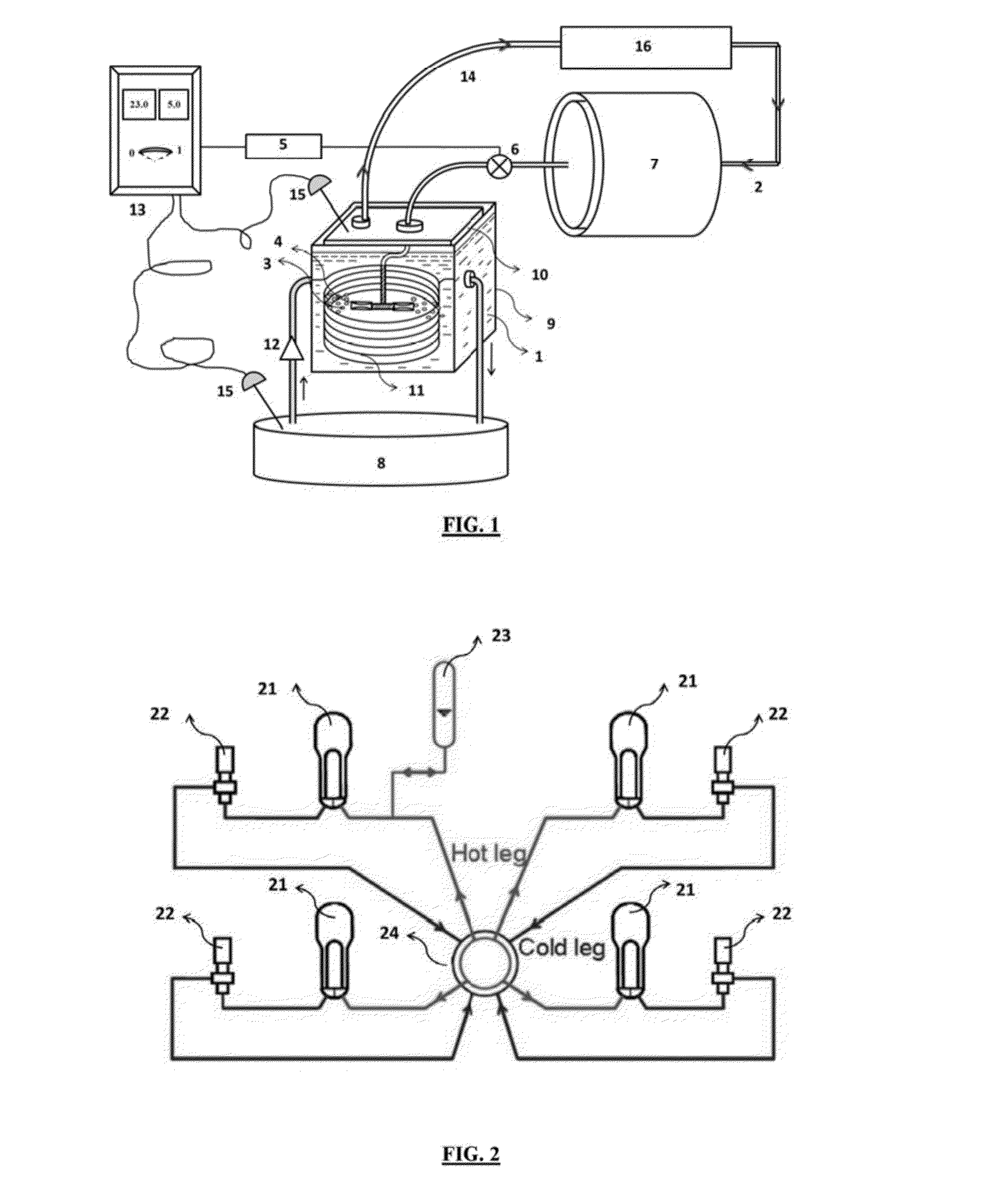Modified dry ice heat exchanger for heat removal of portable reactors
a technology of dry ice heat exchanger and portable reactor, which is applied in the field of chilling systems, can solve the problems of inability to adjust the temperature of the inlet, and the inability to adjust the temperature of the inlet, and achieve the effects of high specific capacity of the coolant, large volume of cold water, and fast cooling of the hot fluid
- Summary
- Abstract
- Description
- Claims
- Application Information
AI Technical Summary
Benefits of technology
Problems solved by technology
Method used
Image
Examples
Embodiment Construction
[0069]A thermal source usually generates heat with the definite heat rate ({dot over (Q)}). Here, as an example, the electrical heater was employed with total resistance R=23.7Ω applying ac voltage (Vrms=220V) which carries current equivalent to Irms=9.28 A to supply ˜2 kW heat power to the water reservoir 8.
[0070]When the heat source is present ({dot over (Q)}≠0), several loading modes were examined for temperature stabilization. For instance, the water is cooled from 80° C. down to 12° C. using continuous loading rate of 533 g / min at the presence of heat source {dot over (Q)}=2 kW. FIG. 6 displays the instantaneous water temperatures at different loading modes.
[0071]After dry ice loading into the cold box 9, a remarkable water (glycol) temperature drop rate 0.2° C. / min (1.4° C. / min) took place, while the temperature drop in cryogen bath 1 was significantly greater than that of water (about 7 times). After a while, the water reaches the minimum temperature. This indicates the end o...
PUM
 Login to View More
Login to View More Abstract
Description
Claims
Application Information
 Login to View More
Login to View More - R&D
- Intellectual Property
- Life Sciences
- Materials
- Tech Scout
- Unparalleled Data Quality
- Higher Quality Content
- 60% Fewer Hallucinations
Browse by: Latest US Patents, China's latest patents, Technical Efficacy Thesaurus, Application Domain, Technology Topic, Popular Technical Reports.
© 2025 PatSnap. All rights reserved.Legal|Privacy policy|Modern Slavery Act Transparency Statement|Sitemap|About US| Contact US: help@patsnap.com



